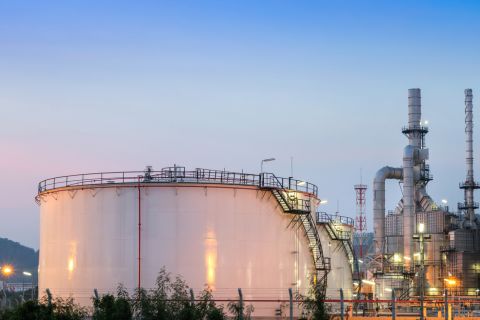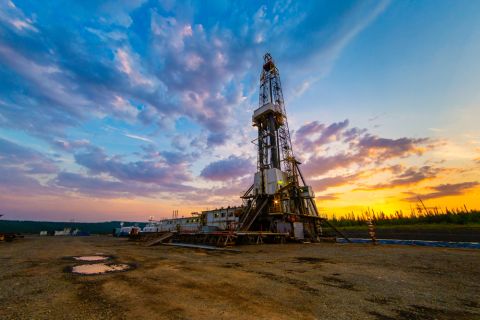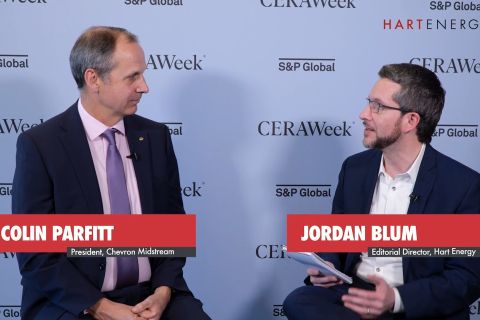?Are higher or lower gas prices on the horizon?
At the recent 20th annual Rocky Mountain Natural Gas Strategy Conference in Denver, sponsored by the Colorado Oil & Gas Association, this was the question posed by Porter Bennett, president and chief executive officer of Bentek Energy LLC, a Golden, Colo.-based energy-markets information company.
His conclusion: it really depends on what happens politically this year.
Due to higher gas prices, “we’re in a period of (nearly) unprecedented growth in supply,” says Bennett. He notes that virtually every major basin in the U.S. has shown incremental gains in 2008, with the largest gas production centered in East Texas and the Rockies.
Barring major disruptions, this means the gas supply and demand balance should begin tipping and drive gas prices lower, he says.
However, Bennett offers a major caveat to this view. “The federal government has essentially quit approving new drilling permits, and more restrictive regulations in Colorado threaten to interfere with the growth in gas supply. It’s a very serious issue.
“We’re at risk of taking what is a positive production story with lower prices for customers and turning it into another price spike,” he warns. “Somehow we have to figure out as an industry how to communicate this with regulators, the public and political leaders.”
This view aside, there are a number of E&P analysts who take a less ambiguous stance on the outlook for natural gas prices. One is Jonathan Wolff, a researcher with Credit Suisse USA in New York.
“Today, our global energy team is significantly increasing its short- and long-term Nymex gas forecast,” he says. “For 2008, we are raising our outlook to $10.50 per million Btu from $8.02; for 2009, we are lifting our forecast to $9.50 from $8. And for 2010 and beyond, we are raising our normalized price to $9 from $8 to reflect a likely greater reliance on domestic supplies rather than imported LNG (liquefied natural gas).”
The company’s revised higher West Texas Intermediate oil-price view—which has risen from an earlier $90 per barrel to $120 for 2008 and $130 in 2011 and 2012—plays an indirect role in this gas-price forecast change by creating upward pressure on world natural gas prices which are still linked to oil—thereby likely limiting LNG imports to the U.S., he says.
“With a large domestic production base, a deep storage and pipeline system, and only moderate demand growth, the U.S. is unlikely to be a competitive bidder in the world LNG market, which should stay well above $10 per MMBtu under our new oil-price scenario,” Wolff adds. “LNG imports in our scenario would remain at an average of just about 2% of U.S. gas supply.”
The U.S. is now more likely to be self-sufficient in its incremental natural gas supply needs by exploiting known unconventional resources in existing and emerging onshore basins, the researcher says.
“Longer-term gas prices should follow the economic drilling-cost curve for gas rather than a relationship with oil. Likewise, in the absence of LNG, we expect the total cost curve to move towards $9 per MMBtu from $8 currently as producers move to tap lower-quality, more-marginal resources over time.”
These gas-price revisions, he concludes, cause significant upward E&P earnings and net-asset-value revisions. “We are raising 2008 and 2009 earnings-per-share estimates by 50% and 40%, respectively.”
Even the Raymond James & Associates research team—which has been relatively bearish of late in its gas-price outlook—has raised its 2008 gas-price forecast from $8 to $10 per MMBtu.
Recommended Reading
Global Oil Demand to Grow by 1.9 MMbbl/d in 2024, Says Wood Mac
2024-02-29 - Oil prices have found support this year from rising geopolitical tensions including attacks by the Iran-aligned Houthi group on Red Sea shipping.
Liberty Energy CEO: NatGas is Here to Stay as Energy Transition Lags
2024-03-27 - The energy transition hasn’t really begun given record levels of global demand for oil, natural gas and coal, Liberty Energy Chairman and CEO Chris Wright said during the DUG GAS+ Conference and Expo.
Tinker Associates CEO on Why US Won’t Lead on Oil, Gas
2024-02-13 - The U.S. will not lead crude oil and natural gas production as the shale curve flattens, Tinker Energy Associates CEO Scott Tinker told Hart Energy on the sidelines of NAPE in Houston.
API Gulf Coast Head Touts Global Emissions Benefits of US LNG
2024-04-01 - The U.S. and Louisiana have the ability to change global emissions through the export of LNG, although new applications have been frozen by the Biden administration.
Exclusive: Chevron Balancing Low Carbon Intensity, Global Oil, Gas Needs
2024-03-28 - Colin Parfitt, president of midstream at Chevron, discusses how the company continues to grow its traditional oil and gas business while focusing on growing its new energies production, in this Hart Energy Exclusive interview.




